This article was co-authored by Alex Dimitriu, MD. Alex Dimitriu, MD is the Owner of Menlo Park Psychiatry and Sleep Medicine, a clinic based in the San Francisco Bay Area with expertise in psychiatry, sleep, and transformational therapy. Alex earned his Doctor of Medicine from Stony Brook University in 2005 and graduated from the Stanford University School of Medicine's Sleep Medicine Residency Program in 2010. Professionally, Alex has dual board certification in psychiatry and sleep medicine.
There are 7 references cited in this article, which can be found at the bottom of the page.
This article has been viewed 54,566 times.
Sleepiness can catch up with you at any time. It makes you feel groggy, interferes with productivity, and could even be potentially dangerous, especially if you operate heavy machinery or drive home while tired.[1] Many employers frown upon workers sleeping on the job, but some industry leaders are coming around to the benefits of daytime naps. Even if you're not allowed to sleep on the job site, there are still some ways of catching a short nap to recharge and refresh you at work.
Steps
Getting Sleep In the Workplace
-
1Aim for an early afternoon nap. Napping too late in the day may affect your ability to get a restful sleep at night, which is another reason why your naps should be timed well during the day.
- It's common to feel most sluggish after lunch, so a lunchtime nap might be ideal for many people.
- Generally, between 1:00 and 4:00 pm is ideal for a nap. The exact time you choose will depend on your work schedule and your need for sleep.
-
2Find the right place to nap. Some people are fortunate enough to work at a company that offers nap rooms. If your workplace doesn't provide sleep space, you may have to get creative.
- If you have a desk job, you may be able to get away with napping in front of the computer. Pull up a spreadsheet you're working on and try to nap with your hand under your chin.
- You may be able to get away with napping in an unused conference room.[2] However, this may be a bold strategy, and it could risk you getting in trouble if the room is needed.
- Some offices have infirmaries with available beds. Depending on your workplace, you may be able to nap there.
- Look into spas in your area that provide nap rooms to customers. This may be a convenient and ideal situation for you, depending on where you work.
Advertisement -
3Get just enough sleep. Napping can be tricky. If you sleep for too long, your body will enter a deeper state of sleep.[3] When this happens, you'll suffer from sleep inertia: waking up feeling more tired and groggy than you were before your nap.[4]
- Short naps lasting about 15 to 30 minutes are best for gaining short-term alertness.[5]
- A brief nap lasting under 30 minutes will not leave you feeling particularly groggy, and it shouldn't interfere with your ability to fall asleep at night.
-
4Set an alarm. Setting an alarm is crucial when you nap at work. If you oversleep, you could land in trouble with your boss. You may also end up missing an important deadline or otherwise feeling like you've lost a good chunk of the day.[6]
- Make sure your alarm's ringtone is jarring and loud enough to wake you up, but not so loud that it will disrupt the workplace.
- You don't need an actual alarm clock; simply use the alarm on your cellphone, or use an alarm clock app/program on your computer.
-
5Try to make an ideal sleep environment. Though you can't control many factors when you nap at work, you'll feel more well-rested if you can create a good environment for sleeping. The temperature, lighting, and sound levels are the most important factors to try to control if you're planning on napping at work.[7]
- If you have a thermostat in your office, try turning the temperature down a little right before you nap.
- A darker environment makes it easier to sleep. Try closing the curtains if you have windows in your office, or simply bring a sleep mask to work.[8]
- Sound can also affect your ability to sleep. If you can't get out of the office and you'll be exposed to a lot of noise, try wearing ear plugs during your nap.
- Comforts from home, like fuzzy socks or a relaxing soundtrack on an mp3 player, can help ease you into a cozy, sleepy state of mind.
Napping at Work When You're Not Allowed To
-
1Nap during your break times. One easy way to avoid getting in trouble for napping at work is to use your own time to sleep. Most companies offer (or are otherwise mandated to offer) employees a designated lunch break, and many offer additional coffee breaks or smoke breaks throughout the day. Using your own time is an ideal way to catch a quick nap without making your boss feel like you're taking advantage of the company.[9]
- Coffee breaks and lunch time are ideal for nap sessions because your boss knows you won't be working, but that doesn't mean you have to spend that time eating.
- You might also be able to get away with napping just before or just after work, especially if you get to work a little early.
-
2Find a private place to nap. If napping at work is not allowed, you'll want to keep your nap time private. Resist the urge to boldly nap at your desk or inside the building, and instead look for a private place where you won't be spotted.
- Your car might be the best place to nap. You can control the temperature, and you'll be guaranteed at least a little bit of privacy.
- If you live in a warm-weather climate, or if it's a particularly nice day outside, you might try napping on a bench outdoors near your workplace. You may want to leave your valuables at work so that you don't get pickpocketed while you nap.
- If you're really desperate, you may be able to catch a quick 10 minute nap in the restroom at work. However, this can be unsanitary and may draw suspicion.
-
3Try a caffeine nap to avoid sluggishness. If you're prone to feeling sluggish no matter how short a nap you take, you may be reluctant to risk a poor performance. Some people find that a caffeine nap can help prevent this problem, though it may not work for everybody.[10]
- Drink a cup of coffee right before you lie down for a nap.
- Set an alarm for 10 to 20 minutes.
- When you wake up, you should quickly feel the effects of the caffeine and hit a level of wakefulness very quickly.
-
4Talk to your boss about the benefits of nap time. If management is not too keen on workplace naps, you might want to consider talking to your boss about the potential benefits of napping. In a sleep-deprived society, napping improves the health and wellbeing of employees and ensures that work gets done more efficiently.
- Naps can help improve focus and productivity during the day. They can also improve an employee's health, which is good for the company's bottom line.
- Let your boss know that napping doesn't have to be seen as lazy or unprofessional. Many professionals take brief power naps during the day to reenergize and rejuvenate.
- Remind your boss that napping at work doesn't mean sleeping for half the day. A standard nap would run the same length as a normal coffee or smoke break, which many companies already allow.
- Don't press the issue. If your boss is against napping in the workplace, trying to debate the issue could get you in trouble very quickly.
Assessing Whether You Can and Should Sleep
-
1Make sure your job won't be in jeopardy. The biggest question to ask yourself before trying to sleep at work is, "Would I get fired if my boss caught me?" If the answer is a clear yes, you may be better off avoiding the daytime nap altogether.[11]
- Some companies may have specific policies that prohibit sleeping on the job. Others may have a general policy about productivity.
- If you're unsure about what you can and can't do, try talking to someone in human resources before you attempt to sleep at work.
-
2Nap if you have a busy afternoon ahead. If you're allowed to nap or can otherwise get away with it (by napping on your own time, for example), then you may be able to proceed with caution. Naps won't benefit everyone, but if you have a busy and demanding afternoon ahead, a quick nap might help you be more productive and efficient for the rest of the day.
- If you have a big project that requires your undivided attention, you may benefit from a nap.
- If you'll be operating heavy machinery or needing to drive home after work and you're struggling to stay awake, a nap could help.
-
3Avoid naps if they won't help. Not everyone will feel better or more productive after a nap. Some people just get groggy no matter how short the nap is, while others may be getting enough sleep each night and simply won't need a nap.
- If you generally feel well-rested, a nap will probably not help you at work.
- If you often have a hard time falling asleep at night, napping during the day may make it worse. Avoid napping and instead focus on getting a good night's rest every evening.
- If you can't or shouldn't nap at work, try drinking a caffeinated beverage (like coffee or tea) instead. It'll give you an energy boost and keep you wakeful through the workday.
Warnings
- Sleeping in an uncomfortable position might cause you pain and discomfort. Try to get as comfortable as you can without being in an actual bed.⧼thumbs_response⧽
- Never boast about sleeping at work. It could make you seem lazy and unproductive, and someone may inform your employer and fire you.⧼thumbs_response⧽
Things You'll Need
- Alarm
- Pillow
- Blanket
- A place where you won't be disturbed
References
- ↑ https://health.clevelandclinic.org/happens-body-dont-get-enough-sleep/
- ↑ http://www.gq.com/story/how-to-nap-at-work
- ↑ Alex Dimitriu, MD. Sleep Specialist. Expert Interview. 16 October 2019.
- ↑ http://science.nasa.gov/science-news/science-at-nasa/2005/03jun_naps/
- ↑ https://sleepfoundation.org/sleep-topics/napping
- ↑ http://www.spine-health.com/blog/how-power-nap-work
- ↑ https://sleepfoundation.org/sleep-topics/napping/page/0/1
- ↑ Alex Dimitriu, MD. Sleep Specialist. Expert Interview. 16 October 2019.
- ↑ http://www.spine-health.com/blog/how-power-nap-work
- ↑ Alex Dimitriu, MD. Sleep Specialist. Expert Interview. 16 October 2019.
- ↑ http://www.spine-health.com/blog/how-power-nap-work
About This Article
While many employers look down upon napping at work, others are realizing the benefits of getting a little rest on the job. Whether you’re allowed to sleep at work or not, there are some ways to catch a short nap to recharge. Many people get tired right after lunch, between 1 and 4 in the afternoon, so see if you can grab a quick rest during your lunchtime or an afternoon break. If your workplace doesn’t have a sleep space, you may be able to nap at your desk, in an unused conference room, or in your car. Once you find a spot, set an alarm for 15 to 30 minutes so you wake up feeling refreshed and can get back to your job quickly. If you’re nervous about feeling sluggish after your nap, have some caffeine right before you rest. When you wake up, you should feel the stimulating effects quickly. To learn how to talk to your boss about allowing naps at work, keep reading!
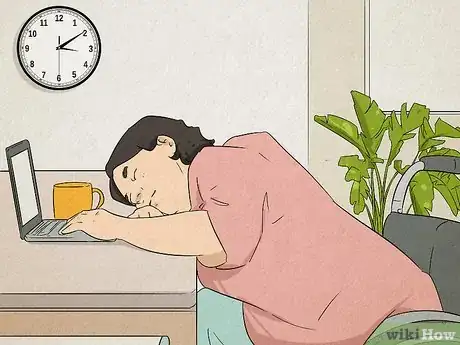
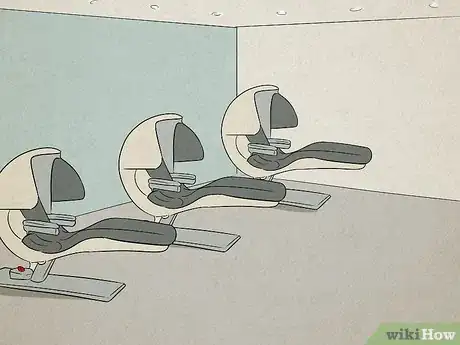


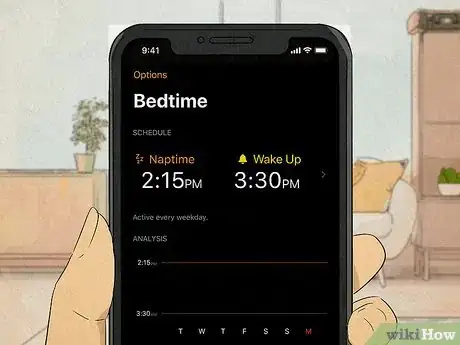
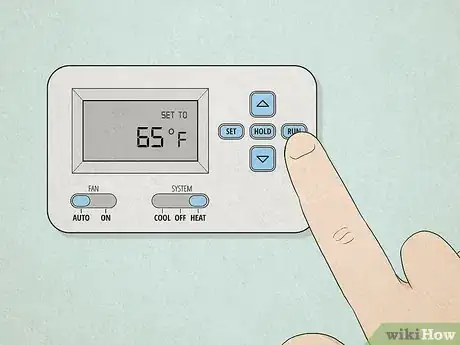
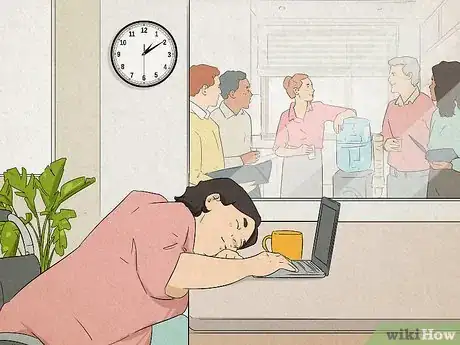

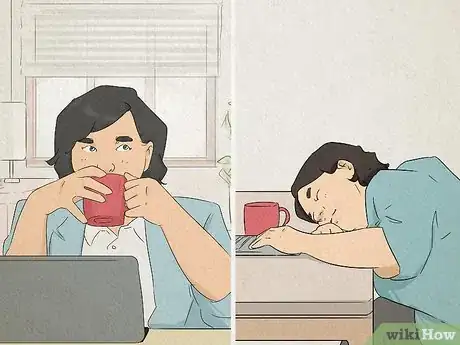


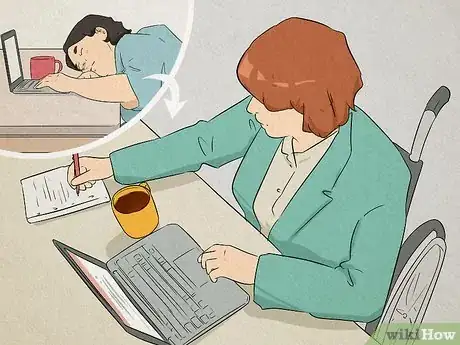




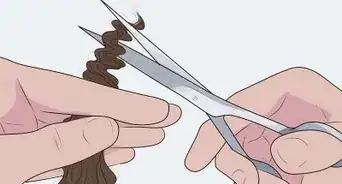
























































Medical Disclaimer
The content of this article is not intended to be a substitute for professional medical advice, examination, diagnosis, or treatment. You should always contact your doctor or other qualified healthcare professional before starting, changing, or stopping any kind of health treatment.
Read More...